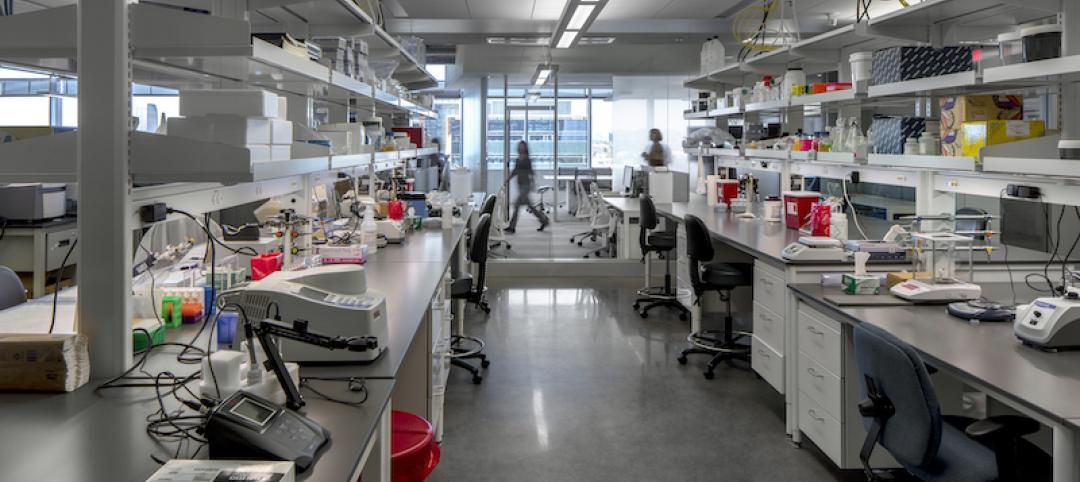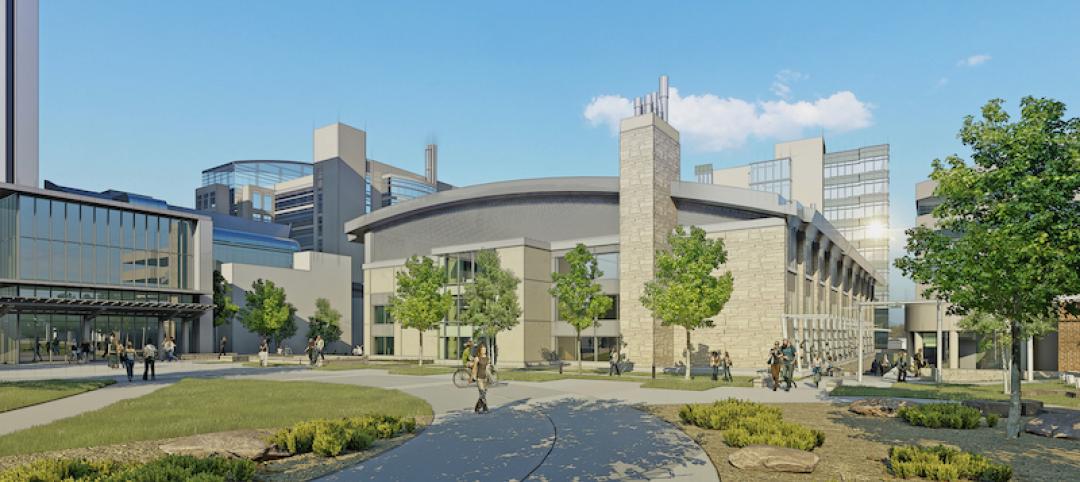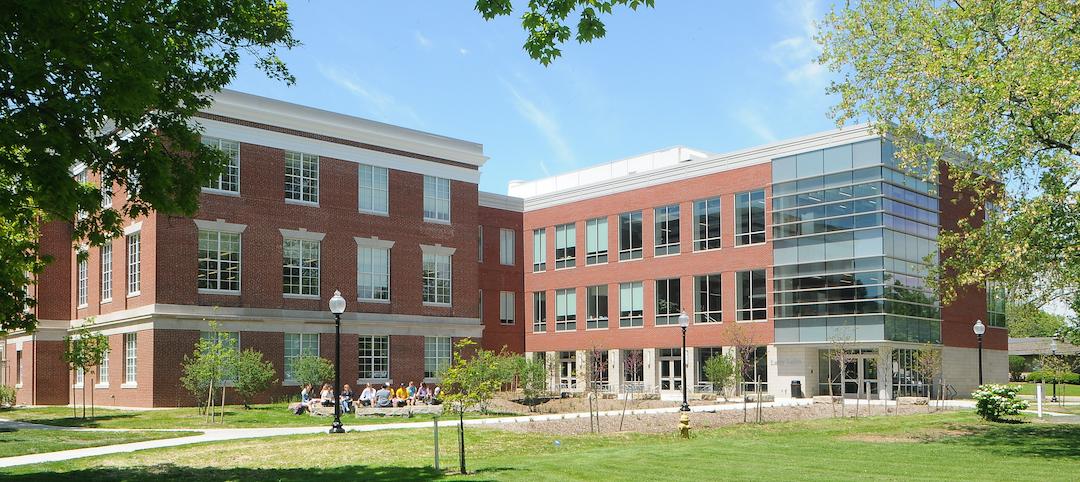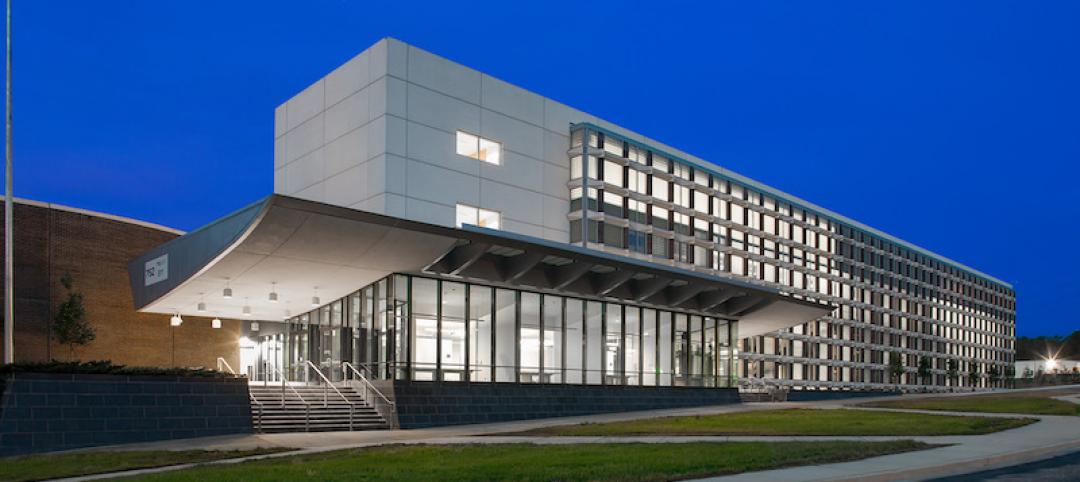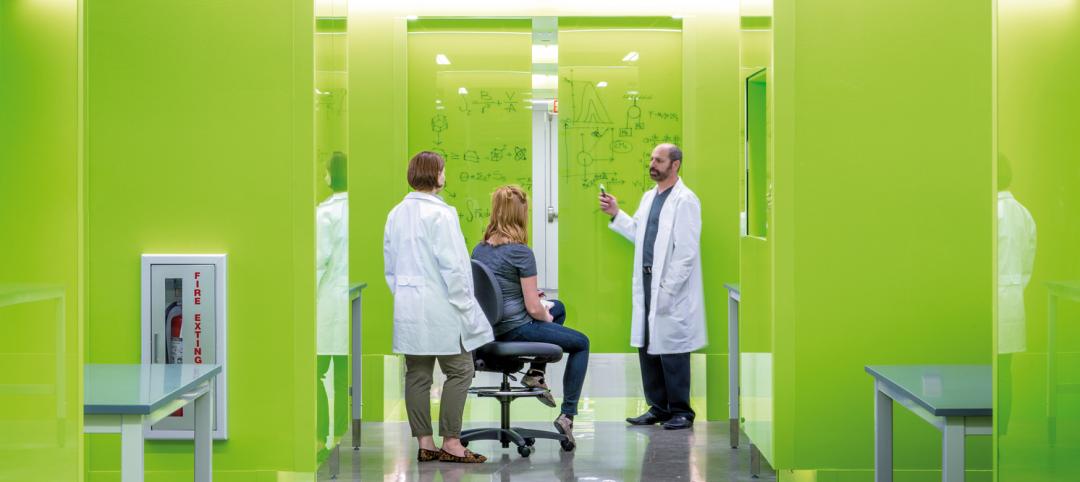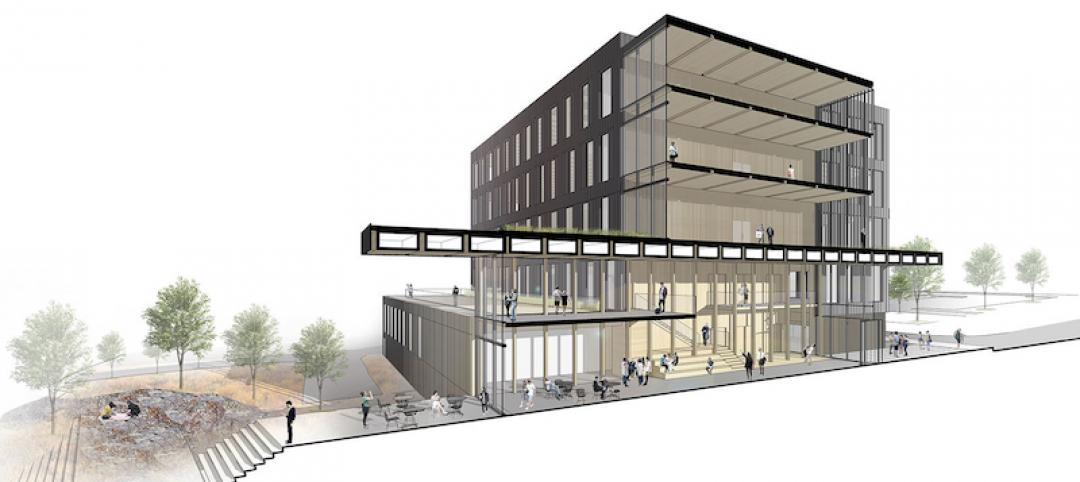In New Brunswick, N.J., a life sciences development that’s now underway aims to bring together academics and researchers to work, learn, and experiment under one roof.
HELIX Health + Life Science Exchange is an innovation district under development on a four-acre downtown site. At $731 million, HELIX, which will be built in three phases, represents New Jersey’s largest-ever investment in life sciences and medical education, according to a press statement.
SJP Properties, in collaboration with New Brunswick Development Corporation (DEVCO), recently unveiled plans for H-2—HELIX’s second phase. A mixed-use, 600,000-sf building, H2 will include build-to-suit lab and office space that can serve a range of uses for large corporate life sciences and technology company tenants. HDR is the lead architect for H-2, and JLL is the building’s leasing agent.
Next to Rutgers University and across from the city’s train station, the 574,000-sf H-1, the development’s first phase, will include the New Jersey Innovation HUB, the new home of Rutgers Robert Wood Johnson Medical School, and a Rutgers translational research facility equipped with a variety of labs to advance the work of 80 research teams and help improve individual and public health. H-1’s two-story ground floor will feature publicly accessible amenities and kiosks, such as a 10,000-sf market hall with food options and a 3,000-sf restaurant. H-1 is currently under construction.
H-3, the final phase of HELIX, is proposed as a 42-story mixed-use building with office space and 220 housing units.
HELIX tenants will have access to the New Brunswick train station. In line for a $49 million renovation, the station will provide access to both NJ TRANSIT, operating nearly 100 train stops in the city each day, and Amtrak.
HELIX also will be in proximity to the headquarters and regional offices of several major health, pharmaceutical, and life sciences companies, including those of Johnson & Johnson, Bristol Myers Squibb, and Ascendia Pharmaceuticals. In addition to next-door neighbor Rutgers University, HELIX will be within an hour’s drive to several colleges and universities, including Princeton University, University of Pennsylvania, and Columbia University.
Related Stories
Laboratories | Jul 24, 2020
Customized labs give universities a recruiting edge
CO Architects is among a handful of firms that caters to this trend.
Laboratories | Jun 24, 2020
CDC set to build the most advanced high containment laboratory in the country
Flad Architects, Page Southerland Page, and WSP will plan, program, and design the HCCL.
University Buildings | Jun 3, 2020
Renovation can turn older university buildings into high-performing labs
David Miller of BSALifeStructures offers technical advice on renovation of college and university laboratories and scientific research facilities.
Giants 400 | Aug 13, 2019
2019 Science + Technology Giants Report: Operational flexibility is a must for S+T buildings
The science and technology (S+T) sector is arguably the industry’s most complex because it caters to a diverse clientele with specific priorities and imperatives, according to Building Design+Construction's 2019 Giants 300 Report.
Laboratories | May 21, 2019
Georgia Tech Research Institute adds 350,000 sf of specialized tech facilities
McCarthy Building Companies with Flad Architects acted as the design-build team.
Laboratories | Apr 23, 2019
Translational health science environments: 6 strategies for open innovation and knowledge transfer
Simply putting researchers and clinicians in the same building with hopes that serendipitous collaborations will ensue will often not yield the outcomes organizations seek.
Sustainable Design and Construction | Apr 9, 2019
One of the largest zero-carbon, net-zero buildings is rising in Spokane
Catalyst will be part of an innovation hub, with Eastern Washington University as its main tenant.
Laboratories | Apr 1, 2019
The Karolinska Institute’s new laboratory building
C.F. Møller Architects designed the building.
| Mar 21, 2019
Preserving Edison's "Corporate" R&D Lab in West Orange, N.J.
Report on Thomas Edison's West Orange, N.J., Laboratory.
Mixed-Use | Oct 25, 2018
Philadelphia’s uCity Square kicks off major expansion drive
This innovation center has several office, lab, and residential buildings in the works.



